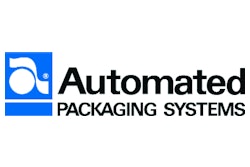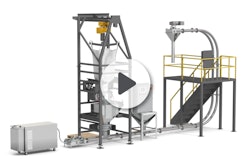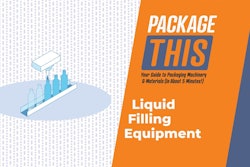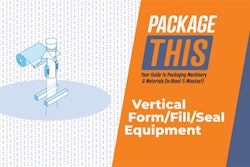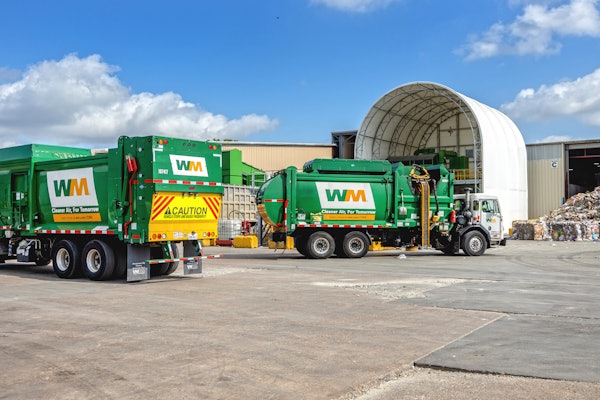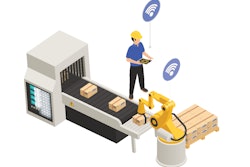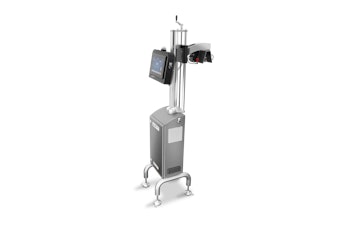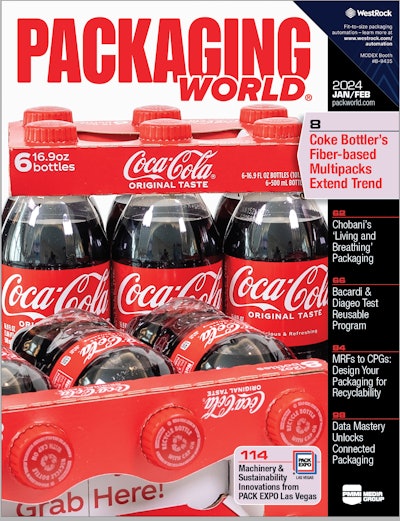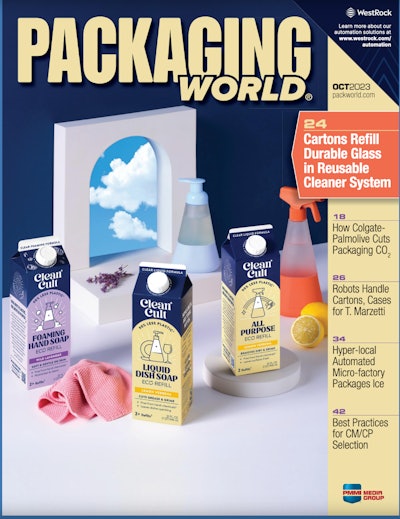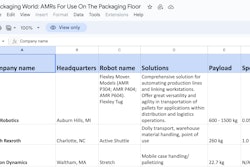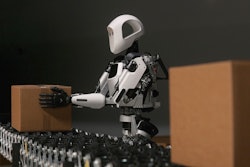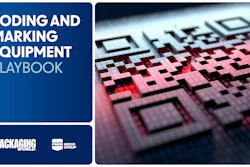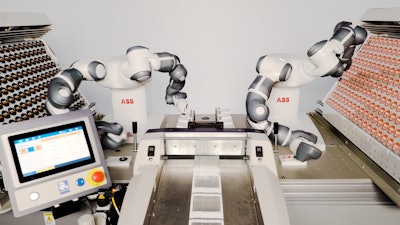
A smartphone is without a doubt the most frequently handled device in the world. It’s also probably one of the most fumbled as well. The PopSocket, a circular handle that sticks to the underside of a phone and has a stem that expands like an accordion, was born out of the need to get a better grip on a smartphone without compromising its portability.
With the introduction of the convenience-adding accessory, savvy marketers saw the value of the one-and-a-half-inch-diameter circular knob as prime real estate for building brand awareness—a mini mobile billboard inexpensive enough to give away at trade shows, events, or through other channels. Such is the dynamic that made branded PopGrips the hottest product for iClick, a Seattle-based purveyor of promotional products.
As iClick increased production to meet the growing demand for its PopGrips, final assembly and packaging of the product became especially stressed. This is where, once a PopGrip is adorned with the logo of a sponsoring company, the finished piece is attached to a custom-printed backer card, typically containing operational instructions and promotional content, and then placed into a film bag.
“Originally the PopGrips were manually inserted onto the cards at one station and then transferred to another station to be placed in an automated bagging machine,” says Steve White, iClick’s Executive Vice President of Production. “It was a labor-intensive process, and even with a crew of four or more people, we couldn’t keep up with the demand. Plus, it was a dull and repetitive duty; finding people to do it for any length of time was difficult.”
Driven by the need to maximize the capacity of the bagging machine while moving employees to higher-skilled jobs, White and his team began looking for potential automation solutions. A series of Google searches provided additional inspiration, and after culling through a myriad of options, iClick decided that an ABB dual-arm collaborative robot, the model IRB 14000 YuMi®, was worth investigating.
Read related articles from Packaging World:
“Are Autonomous Mobile Robots at the Tipping Point?”
“Top Five Functional Machine Improvements for Sustainable Packaging Operations”
“Food Manufacturers Top Two Improvement Priorities”
“In the Trenches with Collaborative Robots”
ABB referred iClick to House of Design (HOD), an ABB Value Provider (i.e., systems integrator) known for developing innovative robotic systems for unusual applications. HOD confirmed early in the discovery process that the dual-arm YuMi collaborative robot was ideally suited for the job, designing a station featuring two dual-arm robots working in sync to card the PopGrips and then place the cards with PopGrips into bags presented by an Automated Packaging Systems bagging system, the Autobag® 500™ bagging system.
“The ABB collaborative robots stood out as the best solution,” says White. “With two dual-arm YuMis, we were able to combine two manual processes into one seamless, automated operation.”
Compact, efficient automation
The two YuMis are positioned next to each other, with each one handling the same tasks. Because of the cobots’ proximity, the movements of each of the four arms (28 total axes) are carefully coordinated to maximize throughput and work within the confined space of the station. HOD used ABB’s RobotStudio® simulation software to experiment with and ultimately program the optimal motion of each arm.
“We use RobotStudio for system configuration and robot reach studies, code testing, and rate calculations, just to name a few functions,” says Brandon Schmidt, HOD’s VP of Automation & Robotics.
 The process begins when one of the robot’s two arms picks a PopGrip from a tray using a custom end effector paired with a suction cup that has a vacuum and blow-off air function built into the robot arm.
The process begins when one of the robot’s two arms picks a PopGrip from a tray using a custom end effector paired with a suction cup that has a vacuum and blow-off air function built into the robot arm.
After one of the two YuMi robot arms picks a PopGrip from a slot in the tray, it places it on an intermediate assembly station. Meanwhile, the other arm picks a backer card measuring 2.9 x 3.15 in. from a card station and slides it onto the groove between the bottom and top of the PopGrip. Explains Svedin, “The assembly station is basically a white plastic slab that the PopGrip rests on while the card is inserted. It is engineered with two small metal pins to hold the PopGrip in place on one side, while the card is inserted from the opposite direction. It’s pretty simple, but effective.”
Then, in the same motion, while still holding the card, the robot arm slides the full piece (card and PopGrip) into a bag presented by the Autobag bagger. It then it fires the I/O on the robot to tell the bagger that the piece is in the bag.
HOD engineered the robots with a custom end effector paired with an off-the-shelf PIAB suction cup that picks up and releases both the PopGrips and the cards. Explains Svedin, the suction cups work with a vacuum and blow-off air function built into the robot arms.
To integrate the robotic pick-and-place process with iClick’s existing Autobag bagger, HOD needed to tie into the bagger’s I/O system for its signaling outputs. Says Svedin, HOD also made some small mechanical modifications to the bagger, including removing ancillary equipment not necessary to the actual bagging function, primarily to allow the bagger to be closely positioned to the robots.
Collaborative aspect is key
Since adding the automated system in February 2018, iClick has seen reduced stress on its production line. “Because we are combining two manual tasks into one automated process, the station performs the work of four people and feeds the automated bagging system at full capacity,” says Svedin. “The system can also work on different orders at the same time, with the I/O on the robot indicating which of several dedicated conveyors to route the bagged PopGrips.”
According to Svedin, the system processes 24 PopGrips/min, “which is comparable to human counterparts, if they are going very quickly and never take a break.” He adds, “The automated system really begins to outpace the humans in that it doesn’t need breaks, and it maintains the same rate 100 percent of the time.”
 During assembly, one of the YuMi’s two robot arms picks a backer card measuring 2.9 x 3.15 in. from a card station and slides it onto the groove between the bottom and top of the PopGrip.
During assembly, one of the YuMi’s two robot arms picks a backer card measuring 2.9 x 3.15 in. from a card station and slides it onto the groove between the bottom and top of the PopGrip.
“The ability to maintain an open factory floor makes it easier for our operators to approach the station, replenish card trays, pull rejects, or do whatever else, without interrupting the workflow,” says White.
Further investment
The dual-robot system was iClick’s first experience with robotic automation, and it was such a success that the company installed second system, identical to the first, six months later. Adding additional flexibility, the systems can be adapted to pick, sort, and package many of iClick’s other promotional products, such as its iCamCovers, smartphone ring holders, webkeys, and pixie lights.
Since the introduction of the automated carding and bagging equipment, those operators formerly working on the iClick line have been moved to supervisory jobs on the production team, where the daily routine is far more satisfying and the career advancement path far more tangible.
The innovative design of the system has also been a boon for HOD, as they have branded it the FlexBagger, which consists of either one or two YuMis along with the Autobag system. It is now being marketed for other small product bagging applications.
See a video of the FlexBagger system here.



